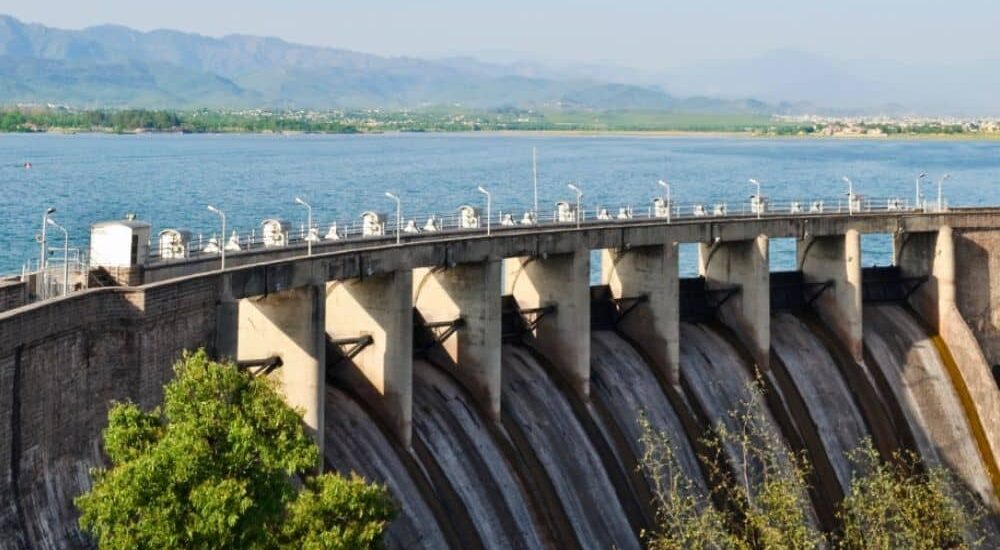
Pakistan’s three primary dams, including Mangla and Tarbela dams, as well as Chashma Barrage, achieved their maximum storage capacity in a remarkable one-day feat on August 17, marking a historic milestone. This collective water storage now stands at an impressive 13.443 million acre-feet (MAF), instilling confidence in abundant crop yields for both the current Kharif and upcoming Rabi seasons.
The Indus River System Authority (IRSA) celebrated this event as a monumental achievement, with all three reservoirs reaching their maximum conservation levels (MCLs) simultaneously. The success can be attributed to well-coordinated efforts and efficient water management. The Water and Power Development Authority (WAPDA), responsible for reservoir operations, considers this a promising sign for Pakistan’s agriculture and hydroelectric power generation.
As of now, Mangla Dam holds 7.356 MAF at its maximum conservation level of 1,242 feet, followed by Tarbela with 5.809 MAF at 1,550 feet, and Chashma with 0.278 MAF at 649 feet. The synchronized filling of these reservoirs ensures a reliable water supply for agriculture and addresses inter-seasonal transfer requirements.
This achievement comes amidst the challenges posed by hydrological uncertainties resulting from climate change and technical limitations. IRSA had initially expressed concerns about reduced water flows during early Kharif 2023. However, timely and widespread rains in the upper and lower catchment areas, especially in the eastern rivers, have enabled effective management and control of provincial water releases.
The resurgence of water in the downstream areas of the eastern rivers, such as Ravi, Beas, and Sutlej, after a decade-long absence, has reduced the need for discharges from the Mangla Dam. This change in water flow patterns highlights the necessity for vigilance among communities residing near old riverbeds.
Interestingly, this accomplishment aligns with Indian reservoirs on the Sutlej and Beas rivers at Bhakra and Pong storages nearing their maximum levels. This synchronicity underscores the interconnected nature of water management in the region.
The attainment of maximum capacity in Pakistan’s major reservoirs brings renewed hope for bumper crop production during the crucial Kharif and Rabi seasons, promising positive implications for the nation’s vital agricultural sector and overall economy.





